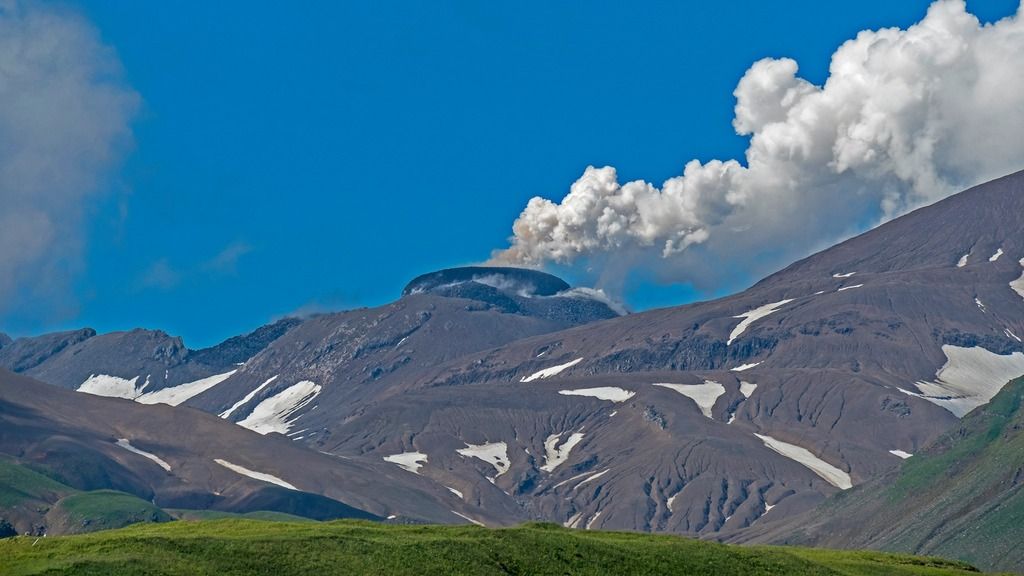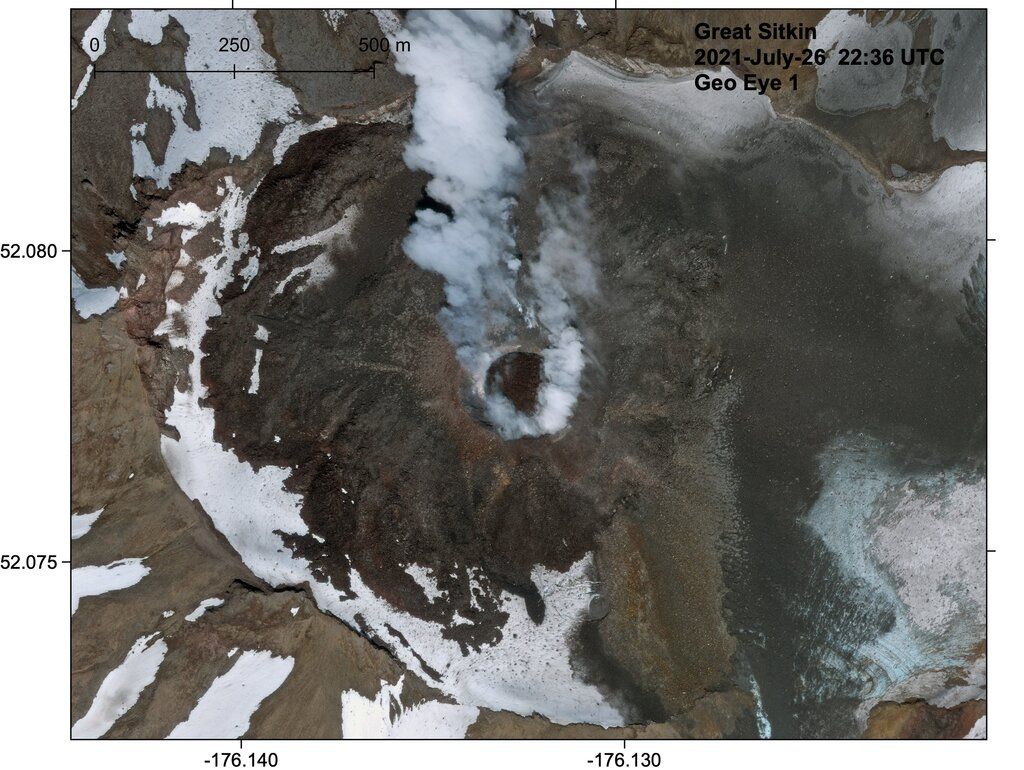Issued on: 06/08/2021

Paris (AFP)
The Mediterranean will be hit by ever fiercer heatwaves, drought and fires supercharged by rising temperatures, according to a draft United Nations assessment seen exclusively by AFP that warns the region is a "climate change hotspot".
The assessment from the Intergovernmental Panel on Climate Change (IPCC) -- to be published next year -- details the future impacts that carbon pollution will have on the region, which this week sweltered in above-average temperatures while Greece and Turkey battle record-breaking blazes.
The Mediterranean's more than half-a-billion inhabitants face "highly interconnected climate risks," says a chapter dedicated to the region in a draft of the IPCC's Working Group II report on climate impacts, due for official release in February 2022.
"Reasons for concern include sea-level rise related risks, land and marine biodiversity losses, risks related to drought, wildfire, alterations of water cycle, endangered food production, health risks in both urban and rural settlements from heat, and altered disease vectors," is its grim assessment.
The draft predicts that temperatures across the Mediterranean are likely to rise faster than the global average in the decades to come, threatening the region's vital agriculture, fisheries and tourism sectors.
Tens of millions more inhabitants will face heightened risk of water shortages, coastal flooding and exposure to potentially deadly extreme heat, it warns.
Depending on how quickly humanity reins in its greenhouse gas emissions, some Mediterranean regions could see rain-fed crop yields decrease by 64 percent, the draft predicts.
Currently, 71 percent of the Middle East and North Africa region's GDP is exposed to high or very high water stress, and 61 percent of its population, it says.
The burnt area of forests in Mediterranean Europe is projected to increase by up to 87 percent if Earth's average surface temperature warms two degrees Celsius above preindustrial levels, and as much as 187 percent in a 3C-hotter world.
Global heating has seen the planet warm 1.1C so far.
While not predicted to be the region of the world worst affected by rising temperatures, the IPCC draft identifies the Mediterranean as a "climate change hotspot".

The most comprehensive assessment of climate impacts ever assembled concludes that only a scenario in which global warming is limited to below 2C -- the core target of the 2015 Paris Agreement -- "is likely to maintain coastal settlements, cultural heritage sites, land and ocean ecosystems in a viable state in most parts of the (Mediterranean) basin".
- More likely, more intense -
Although individual fires such as those in Greece and Turkey are hard to blame directly on warmer temperatures, heatwaves and drought caused by climate change are increasing their probability.
"Every heatwave occurring today is made more likely and more intense by human-caused climate change," Friederike Otto, associate director at the University of Oxford's Environmental Change Institute, told AFP.
"Heatwaves are the type of extremes where climate change is really a game changer and it is a major way how climate change has manifested for years already."
Otto, who is co-lead of the World Weather Attribution service that measures climate change's impacts on weather events, said extreme heat was the most pressing threat facing the Mediterranean region as heatwaves "are by far the deadliest extreme events in Europe".
The IPCC draft predicts that up to 93 million more people in the northern Mediterranean could face high or very high heat stress by mid-century.
Depending on how aggressively humanity draws down greenhouse gas emissions, the risk of heat-related death for elderly people in the Middle East and North Africa will be between three and 30 times higher by century's end, it shows.
- Heat threat -
Climate models project warming across the Mediterranean region about 20 percent higher than global averages, according to the draft.
Southern Europe is currently in the grips of a crippling heatwave with near-record temperatures.
Ilan Kelman, professor of disasters and health at University College London's Institute for Risk and Disaster Reduction, said that when it came to disasters such as fire or flooding, there were practical steps that governments and planners could take to mitigate risk.
These include building less on flood- or fire-prone regions, better forest management, and creating easy, robust escape plans for when things go wrong.

"Heat is different. Climate change is pushing us into areas where we cannot survive," he told AFP.
"To survive this level of heat, the only option is 24/7 indoor cooling and people cannot afford that. We're going to get power outages. The only way is stopping human-caused climate change."
- 'Substantially increasing' risk -
Matthew Jones, research fellow at the University of East Anglia's Tyndall Centre for Climate Change Research, said the average number of days where the Mediterranean faces extreme fire weather conditions had roughly doubled since the 1980s.
"Climate change is forcing Mediterranean landscapes into a flammable state more regularly by drying out vegetation and priming it to burn," he said.
Air quality has sharply dipped in burning regions of Greece and Turkey, and pollution from the blazes had reached as far as Cyprus, according to Mark Parrington, senior scientist at the EU's Copernicus Atmosphere Monitoring Service.
With the population set to reach 657 million by 2050 in Mediterranean areas vulnerable to extreme events, more people are likely to be affected in the future.
"Even if humans were not changing the climate, the risk of these sorts of disasters would be ever-present and substantially increasing," said Kelman.
"We are putting more people and property in harm's way and we are not training people to be able to deal with atypical environmental events like fires, floods and droughts."
© 2021 AFP
Greece, Turkey battle fierce fires as heatwave continues
Issued on: 06/08/2021 -

Athens (AFP)
Hundreds of firefighters battled a blaze on the outskirts of Athens on Friday as dozens of fires raged in Greece in what the prime minister dubbed a "critical situation," while neighbouring Turkey came under increasing pressure over its handling of wildfires.
Greece and Turkey have been fighting blaze upon blaze over the past week, hit by the worst heatwave in decades, a disaster that officials and experts have linked to increasingly frequent and intense weather events caused by climate change.
French firefighters arrived in Greece on Thursday night to help, while Switzerland, Sweden, Romania and Israel are due to send back-up.
"Our country is facing an extremely critical situation," Prime Minister Kyriakos Mitsotakis said late Thursday, putting six out of 13 regions in the country under high alert.

"We're facing unprecedented conditions after several days of heatwave have turned the country into a powder keg."
Some 30 kilometres (19 miles) north of Athens, a fierce blaze ate through vast areas of pine forest, forcing yet more evacuations of villages overnight and blowing thick, choking smoke all over the Greek capital.

In the small town of Afidnes, firefighters were seen standing on their truck in the dead of night, dousing flames that leapt high above them.
Part of a motorway linking Athens to the north of the country has been shut down as a precaution.
- Foreign help -
Deputy Civil Protection Minister Nikos Hardalias said that out of 99 fires reported on Thursday, 57 were still active during the night, notably on the island of Evia where monks who refused to leave their monastery had been forcibly evacuated.
Around 82 French firefighters -- both military and civilian -- arrived on Thursday evening, a French official said.

France was also due to send two water-bombing planes, as was Sweden, while Romania was to dispatch 112 firefighters and 23 vehicles and Switzerland three helicopters, a spokesman for the Greek firefighters told AFP.
Israel, too, said it is planning to dispatch an aircraft carrying 15 firefighters and a large cargo of flame retardant.
Given the extreme danger, the Greek authorities have issued a blanket ban on any visits to forests, national parks or nature spots until Monday.
"If some people still doubt if climate change is real, let them come and see the intensity of phenomena here," Mitsotakis said Thursday while inspecting the ruins where the first Olympic Games were held in ancient times, also threatened by flames.

The blazes also forced the government of North Macedonia to declare a 30-day state of emergency and the defence ministry in its Balkan neighbour Albania to declare the situation "critical" because of the threat to village homes.
- Erdogan under fire -
In Turkey, 208 fires have lit up since July 28, and 12 were still ablaze on Friday, according to the Turkish presidency.
Eight people have died and dozens have been hospitalised across the southern coasts of the country.
In one particularly critical event earlier this week, winds whipped up a flash fire that subsumed the grounds of an Aegean coast power plant in Turkey storing thousands of tonnes of coal.

Turkish President Recep Tayyip Erdogan's office said an initial inspection conducted after the flames had been doused showed "no serious damage to the main units in the plant".
The government is facing rising pressure after the opposition referred to a report which showed only a fraction of the budget for forest fire prevention had been spent.
The General Directorate of Forestry (OGM) spent only 1.75 percent of nearly 200 million Turkish lira ($23 million) allocated for forest fires in the first six months of 2021, main opposition party MP Murat Emir said, referring to numbers apparently from the state agency's own report, which he submitted in a parliamentary question.
"This is a situation that could one could go as far as to describe as treachery," he told AFP.
Erdogan has come under especially withering criticism for being slow or unwilling to accept some offers of foreign assistance after revealing that Turkey had no functioning firefighting planes.
The government has defended itself by blaming the Turkish Aeronautical Association, which Erdogan said at the weekend had not been able to update its fleet and technology.
burs/mbx/spm
© 2021 AFP

Firefighters work to extinguish burning trees as wildfires have been raging for nearly 10 days near Mugla. Thousands of ground personnel, backed by firefighter planes, drones and helicopters, were striving to tackle massive wildfires across seven cities and provinces in southern TurkeyMugla is one of the regions hardest hit by the fires. Hakan Akgun/SOPA Images via ZUMA Press Wire/dpa
Firefighters work to extinguish burning trees as wildfires have been raging for nearly 10 days near Mugla. Thousands of ground personnel, backed by firefighter planes, drones and helicopters, were striving to tackle massive wildfires across seven cities and provinces in southern TurkeyMugla is one of the regions hardest hit by the fires. Hakan Akgun/SOPA Images via ZUMA Press Wire/dpa
Turkish emergency crews continued to battle the worst fires seen in years for the 10th consecutive day on Friday.
Twelve fires still remain out of control, the Presidential Communications Office said on Friday.
The worst fires are burning along Turkey's southern and western coastline, in the regions of Antalya, Marmaris, Bodrum and Milas.
Later, officials said two of the fires near Antalya had been brought under control. Forestry Minister Bekir Pakdemirli thanked rescue workers for their efforts in a tweet on Friday.
The flames engulfed several neighbourhoods during the night in Milas, but residents had already been evacuated from their homes, the local authorities said.
The Milas fire is now under control, but in other areas, flames threaten to engulf residential areas: A time-lapse video from Thursday showed a wall of fire consume a village in half an hour.
The fires also caused devastating damage in Manavgat in Antalya. "This is hell on earth," Murat Olcay, who lost his house in the village of Kalemler, told dpa.
He said the fire had swept through the village within the space of just half an hour, burning countless homes in no time at all.
He was only just able to escape on foot, he said.
More than 200 forest fires broke out last Wednesday across several provinces, in the worst blazes seen in more than 13 years. Many of the fires are still burning with unprecedented intensity.
At least eight people have died and at least 100,000 hectares of forest and fields have fallen victim to the flames, according to estimates.
In Marmaris alone, an area of more than 16,000 hectares has been burned by the fires, the local authorities said.
Foreign Minister Mevlut Cavusoglu, whose constituency is in Antalya, had hopeful words on Thursday night, saying the wind was due to die down in Antalya on Friday. He said he hoped the fires there could be brought under control.
Of the residents evacuated across the nation, some are now staying in schools and sports stadiums.
The authorities have issued lists of things that people need, ranging from cutlery to plates, pillows and blankets.
On Friday, Cavusoglu called his Greek counterpart, Foreign Minister Nikos Dendias, as his country is also battling extensive wildfires.
The two ministers agreed to help each other in fighting the flames, although they said this would only be possible when each country had managed to control the fires in their own territory.
The two countries have been fighting for decades over sovereign rights in the Aegean Sea and over the Cyprus issue, and the situation had further escalated in recent months.

Firefighters work to extinguish burning trees as wildfires have been raging for nearly 10 days near Mugla. Thousands of ground personnel, backed by firefighter planes, drones and helicopters, were striving to tackle massive wildfires across seven cities and provinces in southern TurkeyMugla is one of the regions hardest hit by the fires. Hakan Akgun/SOPA Images via ZUMA Press Wire/dpa

Firefighters work to extinguish burning trees as wildfires have been raging for nearly 10 days near Mugla. Thousands of ground personnel, backed by firefighter planes, drones and helicopters, were striving to tackle massive wildfires across seven cities and provinces in southern TurkeyMugla is one of the regions hardest hit by the fires. Hakan Akgun/SOPA Images via ZUMA Press Wire/dpa













